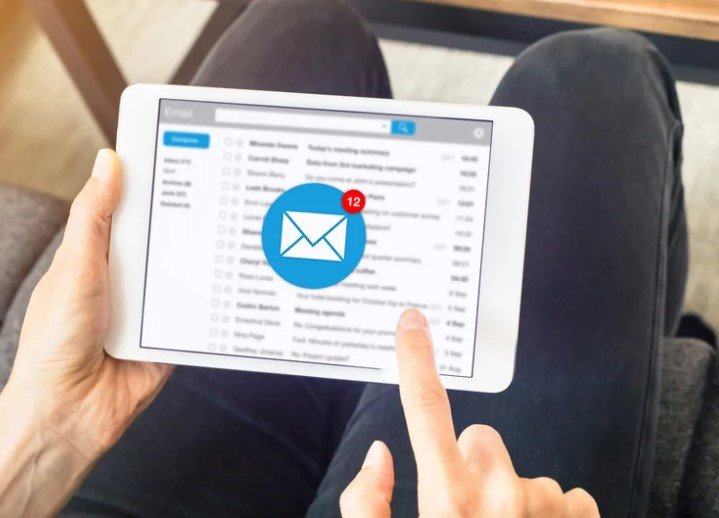Last Updated on October 30, 2025
Marketing in today’s world has evolved far beyond traditional ads and hefty campaigns. For budget-conscious entrepreneurs, exploring free ways to market your small business online is not only viable—it’s essential for visibility and growth. Let’s explore some of the most effective free ways to market your small business that cost nothing but deliver tremendous value.
1. Social Media Marketing
Social media platforms like Facebook, Instagram, Twitter, LinkedIn, and TikTok offer free tools to create business pages, promote content, and interact with audiences. To make the most of these platforms:
- Post regularly with helpful, entertaining, or inspiring content.
- Use relevant hashtags to extend reach.
- Engage in real-time through comments, likes, and direct messages.
- Join local or niche Facebook Groups to network and subtly promote your services.
The key is consistency. The more value you offer, the more trust and loyalty you build with your audience.
2. Google My Business (GMB)
Claiming and optimizing your Google My Business listing is crucial, especially for local visibility. It ensures your business appears in search results and Google Maps, giving potential customers easy access to your location, hours, contact info, and reviews.
- Update business details regularly.
- Add high-quality images.
- Respond to customer reviews—both positive and negative.
GMB boosts local SEO and builds credibility without costing a dime.
3. Blogging for SEO and Authority
Creating blog posts relevant to your industry is one of the smartest free ways to market your small business, helping you rank higher in search engines and educate your audience. Blogging drives organic traffic to your website, establishes authority, and builds trust. Tips:
- Use long-tail keywords.
- Solve real problems your audience faces.
- End each post with a call to action (CTA).
Even one quality blog post per week can drive long-term results.
4. Email Marketing on a Budget
Using free email marketing tools like Mailchimp, MailerLite, or SendinBlue is among the most practical free ways to market your small business, helping you build a subscriber list from day one. Collect emails through:
- Social media bios
- Signup forms on your website
- Free downloadable content (e.g., PDFs, checklists)
Then, send regular newsletters with helpful tips, updates, and promotions. Just be sure to follow GDPR compliance and offer easy opt-outs.
5. Launch a YouTube Channel
Video content is exploding in popularity—and launching a YouTube channel is one of the best free ways to market your small business through authentic storytelling. Start a YouTube channel where you:
- Post how-to videos, tutorials, or behind-the-scenes footage
- Answer frequently asked questions
- Share customer success stories
You don’t need fancy equipment—just a smartphone and natural lighting to get started. Add keyword-rich titles and descriptions to help your videos rank.
6. SEO (Search Engine Optimization)
SEO helps your website appear on Google when people search for services you offer. It takes time, but the benefits are long-term and powerful.
- Focus on keywords your audience is already searching.
- Write clear, helpful content.
- Optimize meta titles, descriptions, and image alt-text.
Using free SEO plugins like Yoast SEO (WordPress) or RankMath can simplify the process.
7. Start a Podcast or Be a Guest
Podcasts are a powerful medium to build authority and reach niche audiences. Either start your own or pitch yourself to be a guest on existing shows in your industry. Offer insights, stories, or unique experiences that align with the show’s audience.
8. Join Industry Forums and Online Communities
Whether it’s Reddit, Quora, or niche Facebook/LinkedIn groups, these platforms allow you to:
- Answer questions
- Offer expert advice
- Gently introduce your business when relevant
By consistently adding value, people will start to recognize and trust your brand.
9. Networking Locally
Get involved in your local business scene by attending chamber of commerce meetings, entrepreneur meetups, trade shows, or small business expos. These settings provide face-to-face opportunities to:
- Share what your business offers
- Learn from other professionals
- Build strategic partnerships or referral pipelines
Carry business cards and have a short elevator pitch ready. People support businesses they know, like, and trust—networking makes that possible.
10. Cross-Promotions with Local Businesses
Partner with other small, non-competing businesses that share your target audience. For example:
- A bakery teams up with a nearby florist for a special event
- A yoga studio collaborates with a health food store on a wellness giveaway
- A mechanic and a car wash refer clients to each other
This approach not only reduces your marketing costs but also doubles your exposure. It’s one of the smartest collaborative strategies available for small businesses.
11. Referral Programs
Encourage satisfied customers to refer their friends and family. Even if you don’t offer monetary rewards, small perks—like discounts, shout-outs on social media, or priority service—can motivate people to spread the word.
Tips for creating an effective referral program:
- Make it easy to refer someone (e.g., a link or shareable code)
- Clearly communicate what both the referrer and the new customer will receive
- Track referrals using free tools or spreadsheets
Word-of-mouth is incredibly powerful because people trust recommendations from friends more than ads.
12. Community Involvement
Supporting your local community doesn’t just feel good—it builds your brand reputation organically. Some simple and free ways to get involved:
- Volunteer at local events or charities
- Donate products or services to fundraising efforts
- Host or sponsor a community cleanup day
- Join town hall meetings and offer helpful input
When people see your commitment to the community, they’re more likely to support your business.
13. Local Sponsorships and Collaborations
If you have the bandwidth—not necessarily the budget—offer to help with:
- Designing flyers for local non-profits
- Hosting a free workshop at a community center
- Speaking at local schools or colleges about entrepreneurship
Such efforts position your business as helpful and knowledgeable. People naturally gravitate toward brands that give back.
14. Free Workshops and Webinars
Education is a powerful marketing tool. Offer free classes, demos, or webinars related to your business expertise. Examples:
- A dog trainer can teach a “5 Puppy Training Mistakes” class
- A digital marketer can host a “How to Grow on Instagram” webinar
- A real estate agent can do a “First-Time Buyer Tips” seminar
Use free tools like Zoom, Google Meet, or Facebook Live to host these sessions and promote them on social media or local bulletin boards.
15. Word-of-Mouth and Testimonials
Never underestimate the power of satisfied customers. Encourage them to:
- Leave reviews on Google, Facebook, or Yelp
- Post their experiences on social media and tag your business
- Record short testimonial videos
Display these testimonials on your website, social media, and printed materials. Real stories build real trust.
16. Business Cards That Make an Impression
A well-designed business card remains one of the simplest yet most effective networking tools. It provides a tangible reminder of your business after face-to-face interactions.
Tips for effective business cards:
- Include your social media handles, website, and a QR code for quick access
- Use free tools like Canva to design visually appealing cards
- Print small batches using low-cost local or online services
Distribute them at cafes, co-working spaces, libraries, or pin them to bulletin boards at community centers.
17. DIY Public Relations
You don’t need a PR agency to get media coverage. Write a short, compelling press release about a business milestone, community initiative, or upcoming event and send it to local newspapers, magazines, and blogs.
How to do it:
- Craft a strong headline and lead paragraph
- Include a short bio and contact information
- Target local reporters or bloggers who cover community news
Follow up professionally and offer to provide quotes or photos. Local media often appreciate small business stories with a human element.
18. Guerrilla Marketing
This strategy is all about being bold, unexpected, and memorable. Guerrilla marketing involves using unconventional methods to grab attention in public spaces.
Some creative examples:
- Sidewalk chalk art with your business name and message
- Branded stickers or flyers in high-traffic areas
- A flash mob or mascot appearance at local events
The goal is to get people talking—online and offline—about your brand, even if just out of curiosity.
19. Handwritten Thank You Notes
In a world filled with emails and automated responses, a handwritten thank you note stands out. It’s a simple, heartfelt gesture that can transform a one-time buyer into a lifelong customer.
How to implement:
- Write a short thank you note after a customer’s first purchase
- Include a small bonus like a discount code or loyalty offer
- Mention something personal if possible (e.g., “Thanks for chatting about your dog—hope they enjoy the treats!”)
This approach is practically free but delivers a high emotional return.
20. Customer Loyalty Programs
Encourage repeat business by offering incentives like:
- A punch card (“Buy 5, Get 1 Free”)
- Birthday rewards
- Exclusive early access to new products or promotions
You don’t need complex software. Simple printed cards or digital forms (via Google Forms or email) work just fine. Loyal customers are more likely to spread the word and become brand advocates.
21. Free Samples or Trials
If you sell physical products or services, offer free samples, consultations, or trial periods. This builds trust and removes the risk barrier for potential customers.
Examples:
- A baker offers free cookies at a farmer’s market
- A massage therapist gives a 15-minute stress-relief trial
- A software developer offers a 7-day demo version of an app
Once people experience your value firsthand, they’re much more likely to return and refer others.
22. Window Displays and Signage
For businesses with a storefront, eye-catching window displays and signs are essential—and often overlooked.
Tips:
- Use seasonal or trending themes to draw attention
- Feature testimonials, social proof, or limited-time offers
- Display your social media handles or QR codes for instant online access
If your windows face foot traffic, treat them like free advertising space.
23. Educational Content Creation
Educating your audience through blogs, tutorials, or webinars remains one of the timeless free ways to market your small business and build authority. It not only provides value but also establishes you as a thought leader.
Types of educational content to create:
- Blog posts and how-to guides
- Downloadable eBooks or checklists
- Infographics and data visualizations
- Video tutorials or tips on social media
Use platforms like Canva, Google Docs, and YouTube to design and distribute your content for free. Always include a call to action (CTA) to guide viewers to your product, service, or email list.
24. Launch a Resource Center or FAQ Page
Having a dedicated resource page on your website can help answer common customer questions while improving your SEO. You can include:
- FAQs
- Instructional videos
- Troubleshooting tips
- Guides on how to use your product or service
This saves you time on repetitive customer support while simultaneously educating your audience and increasing traffic.
25. Webinars and Live Streams
Hosting a webinar or live Q&A builds authority and deepens connections with your audience. You don’t need fancy gear—just a decent webcam, microphone, and a quiet space.
Ideas for webinars:
- Answering FAQs from customers
- Giving a live product demo
- Teaching a mini-workshop related to your niche
Free platforms like Zoom, Google Meet, Instagram Live, and Facebook Live make it easy to go live or record sessions for replay.
26. Start a Podcast
If you enjoy speaking and storytelling, starting a podcast can be a fantastic way to grow your brand and reach a broader audience. Podcasts allow you to:
- Share knowledge and opinions
- Interview local experts, clients, or collaborators
- Highlight success stories and business tips
Use free tools like Anchor, Audacity, or Spotify for Podcasters to get started without spending anything.
27. Engage with User-Generated Content (UGC)
Encourage your customers to share photos, reviews, and videos using your product or service. Repost these on your own platforms (with permission) to build social proof.
Ways to promote UGC:
- Run a simple photo contest
- Use a branded hashtag
- Offer a small prize or shout-out for participation
UGC not only showcases real-life customer satisfaction but also reduces the pressure on you to constantly create content.
28. Answer Questions on Public Platforms
Platforms like Quora, Reddit, and Facebook Groups allow you to find and answer real questions related to your business or industry. By helping others:
- You build credibility
- You can subtly mention your business (without being salesy)
- You increase traffic to your website or social media over time
Make sure your responses are helpful and genuine—avoid spammy self-promotion.
29. Create Interactive Content
Engagement leads to memorability. Simple interactive content can make your audience feel involved with your brand.
Examples:
- Polls and quizzes on Instagram or Facebook
- “This or That” stories
- “Ask me anything” sessions
- Free tools or calculators (if relevant to your industry)
Use tools like Typeform, Google Forms, or Instagram stickers to create interaction.
30. Collect and Showcase Customer Testimonials
Positive feedback from happy customers builds trust and encourages new prospects to try your business. Use every channel available to request and showcase testimonials.
Where to collect reviews:
- Trustpilot
- Direct email follow-ups
- Instagram DMs (with permission to publish)
Then, display these testimonials on your website’s homepage, product pages, landing pages, or in your email marketing.
Bonus Tip: Add a face or video with the review whenever possible—it boosts credibility.
31. Encourage and Respond to Online Reviews
Online reviews are a form of digital word-of-mouth. Encourage your customers to leave honest reviews and respond to each one—whether positive or negative—with professionalism.
Why responses matter:
- They show that you care about customer feedback
- They boost your SEO through keyword-rich interactions
- They offer a chance to resolve concerns publicly and build trust
Even one 5-star review can influence dozens of new prospects.
32. Participate in Q&A Platforms
Sites like Quora, Reddit, and Stack Exchange are great for establishing authority. Look for threads related to your industry and contribute valuable answers.
For example:
- A nutritionist might answer, “What are the best healthy snacks for kids?”
- A car mechanic could respond to, “Why does my car squeal when I start it?”
- A freelance marketer may share, “How do I promote my small business on a budget?”
Include your business name or website link in your profile bio—not every answer—so readers can find and trust you naturally.
33. Engage in Niche Facebook or LinkedIn Groups
These groups are treasure troves of potential customers and collaborators. By providing helpful insights, answering questions, or sharing useful resources, you position yourself as a trusted authority.
Tips for group engagement:
- Join groups where your ideal customers are active
- Avoid hard selling—be helpful first
- Share content that adds value or starts a discussion
- Offer free resources or tools to demonstrate your expertise
Over time, group members will recognize your contributions and be more open to exploring your services or recommending you to others.
34. Build an Online Portfolio or Case Study Page
If you’re a service-based business or freelancer, a portfolio is crucial—even a simple one. You can create one for free using platforms like:
- Google Sites
- Carrd
- WordPress.com
- Canva (portfolio presentation templates)
- Behance (for creatives)
Include before-and-after images, detailed descriptions, client testimonials, and measurable results to highlight your skills and build social proof.
35. Collaborate with Micro-Influencers
Influencers aren’t just for big brands. Micro-influencers (those with 1K–10K followers) often have more engaged audiences and are open to barter-based collaborations.
Steps to start:
- Identify influencers in your niche or local area
- Reach out with a personalized message
- Offer your product or service in exchange for a review or shoutout
Be sure to check engagement rate—not just follower count. A small but loyal audience often delivers better results than a large, passive one.
36. Launch a Simple Referral Challenge
Take your referral program to the next level with a fun challenge. For example, reward customers who refer the most people in a week or month.
Reward ideas:
- A free product or exclusive offer
- Early access to a new service
- A featured spotlight on your website or social media
This gamifies your marketing and turns customers into active promoters.
37. Use QR Codes to Link Offline to Online
QR codes are a simple and free way to bridge the gap between real-world interactions and online engagement.
Where to use them:
- On your business cards
- In your store window
- On packaging or receipts
- In local flyers or posters
Direct customers to your website, social media, newsletter signup, or product catalog. Use free tools like QR Code Monkey to create codes instantly.
38. Engage in Local Events and Pop-Ups
You don’t need to spend money on a booth to benefit from local events. Attend farmers markets, art fairs, or street festivals with small free samples or business cards in hand.
Alternative ideas:
- Partner with a vendor who already has a booth
- Offer free product demos on the sidewalk
- Host a “mini event” in front of your storefront with live music or giveaways
Local engagement creates real-world memories that often lead to lasting customer relationships.
39. Offer Free Trials or Consultations
People love to “try before they buy.” Offering a no-strings-attached trial of your product or service helps break hesitation and builds confidence.
Examples:
- A coach offers a free 20-minute discovery call
- A graphic designer provides one sample design
- A bakery gives out bite-sized samples in-store or at events
Once someone experiences your value firsthand, they’re much more likely to convert into a paying customer.
40. Promote with Purpose-Driven Marketing
Aligning your business with a cause is not only fulfilling—it’s a powerful promotional strategy.
How to do it:
- Support a local charity or nonprofit
- Pledge to donate a percentage of sales for a cause
- Host a free community event tied to a social impact mission
People want to support businesses that care. Purpose-driven marketing encourages positive word-of-mouth and deeper brand loyalty.
Final Verdict: Creativity Over Capital
Even in a world full of flashy ads and viral campaigns, embracing free ways to market your small business through creativity, consistency, and authenticity still wins. As we’ve shown in this guide, there are countless free ways to market your small business that require more effort than expense—and that’s often what sets thriving businesses apart.
From social media storytelling to local networking, from educational content to strategic partnerships, your growth doesn’t have to depend on a budget—it depends on how well you connect with people.
Start with one or two strategies from this guide and expand from there. Test, learn, improve, and stay consistent.
Remember: Success isn’t about how much you spend—it’s about how smartly you show up. And these free ways to market your small business are your roadmap to doing just that.
Frequently Asked Questions (FAQs)
Q: Can I market my business online without a website?
A: You can effectively market your business online without a website. Leveraging platforms such as social media (Facebook, Instagram, Twitter), Google My Business, and online directories are key. Consistently posting relevant content, engaging with your audience, and optimizing profiles enhances visibility. Additionally, email marketing campaigns and participation in online forums can further amplify your brand’s online footprint.
Q: How can I leverage email marketing without a budget?
A: Even without a budget, email marketing can be impactful. Start by using free tiers of platforms like Mailchimp or SendinBlue. Actively collect emails through website sign-ups or social media channels. Prioritize offering high-quality, valuable content to entice and retain subscribers. It’s essential to maintain consistent, engaging communication, nurturing trust, and fostering strong customer relationships over time.
Q: What’s an affordable way to engage the local community?
A: Engaging the local community without stretching your budget can be achieved in multiple ways. Consider attending local events or hosting free workshops or classes that align with your business’s expertise. Active participation in community groups or joining a local business association raises your profile and fosters relationships and trust. Leveraging social media platforms to promote local causes or share community news can enhance your visibility and connection to residents.
Q: Can I use user-generated content (UGC) for promotion?
A: Absolutely! User-generated content (UGC) is a powerful promotional tool. Encouraging customers to share reviews, photos, or testimonials provides you with free, authentic content and amplifies trustworthiness among potential clients. UGC acts as social proof, showcasing real-life experiences and satisfaction, which can drive more engagements and conversions for your brand. It’s an organic way to enhance your promotional efforts.
Q: How do I get free press for my business?
A: Getting free press for your business can significantly boost visibility. Craft compelling press releases about major events or milestones to achieve this and distribute them to local newspapers, TV stations, and online platforms. Build relationships with local media personnel. Additionally, offer to be a guest on community radio shows or local podcasts, sharing your expertise and highlighting your business’s unique value proposition. Establishing a consistent media presence can foster trust and recognition in the community.


